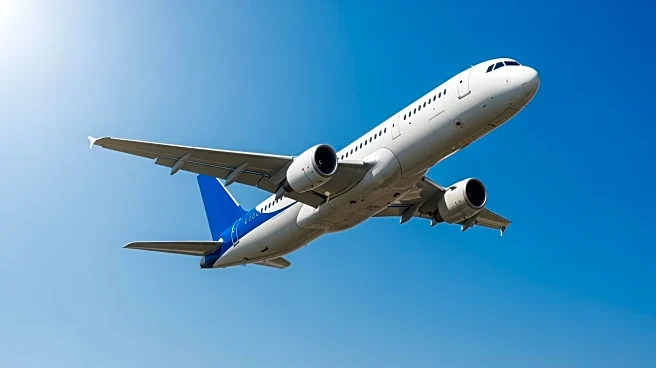What's Happening?
Airlines are significantly expanding their route networks as global travel continues to recover from the COVID-19 pandemic. Etihad Airways is launching five new destinations, including Algiers, Chiang Mai, Hanoi, Hong Kong, and Tunis, marking its largest
single-month expansion in recent years. This expansion is part of a broader strategy to restore links across Asia, Africa, and the Middle East. Meanwhile, China Eastern Airlines is resuming its Shanghai Pudong-New Delhi route after a five-year suspension, becoming the first Chinese airline to return to India since the pandemic and the deterioration of China-India relations. IndiGo is also expanding its services, resuming daily flights between Kolkata and Guangzhou and planning a New Delhi-Guangzhou service. Additionally, Hainan Airlines is expanding in Europe with a new route between Chongqing and Brussels, while Wizz Air is resuming flights to Abu Dhabi from Larnaca and Sofia.
Why It's Important?
The expansion of airline routes is a significant indicator of the recovery in global travel demand following the disruptions caused by the COVID-19 pandemic. This resurgence is crucial for the aviation industry, which suffered massive financial losses during the pandemic. The reopening of routes, particularly between China and India, signals a potential thaw in bilateral relations and could boost economic ties between the two countries. For airlines, expanding their networks allows them to tap into underserved markets and increase their competitiveness. This is particularly important as airlines seek to capitalize on the pent-up demand for international travel. The resumption of flights also has broader economic implications, potentially boosting tourism and trade in the regions served by these new routes.
What's Next?
As airlines continue to expand their networks, they may face challenges such as fluctuating fuel prices, geopolitical tensions, and varying COVID-19 restrictions across different countries. Airlines will need to remain agile and responsive to these challenges to sustain their growth. Additionally, the success of these new routes will depend on the recovery of passenger confidence and the ability of airlines to maintain competitive pricing. Stakeholders, including governments and tourism boards, may also play a role in supporting these expansions through favorable policies and marketing efforts to attract travelers.
Beyond the Headlines
The expansion of airline routes could have long-term implications for global connectivity and economic integration. As airlines restore and introduce new routes, they contribute to the globalization of business and cultural exchanges. This trend may also encourage infrastructure development in airports and surrounding areas, potentially leading to job creation and economic growth. However, the environmental impact of increased air travel remains a concern, prompting airlines to explore more sustainable practices and technologies to reduce their carbon footprint.














